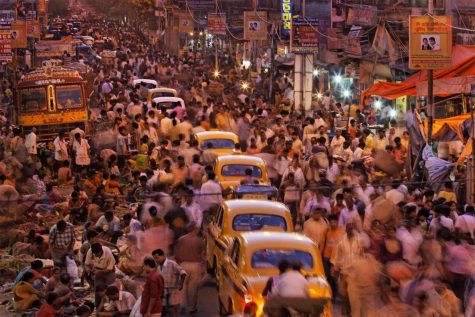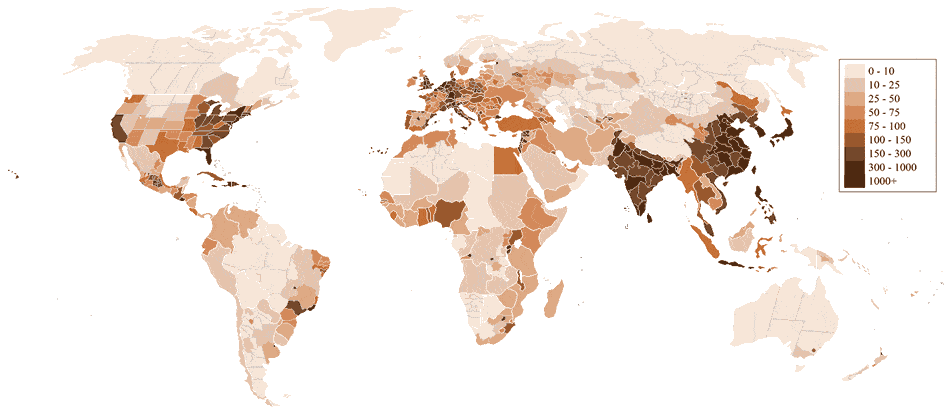
By: Maxine Davey | Head Editor
October 8, 2019
Since the Industrial Revolution in the 1800s, human population has exploded exponentially. According to the World Clock, “whereas it had taken all of human history until around 1800 for world population to reach one billion, the second billion was achieved in only 130 years (1930)…and the fifth billion in only 13 years (1987).” And today, that number is quickly approaching eight billion.
While our growth rate (calculated by subtracting crude death rate from crude birth rate) reached its peak of 2.09% in 1968 and 1969 and has since decreased by nearly a percentage to 1.08% in 2019, the implications of our world’s continually-growing population are disastrous.
It is forecast that by 2057, the global population will reach ten billion. These ever-increasing figures will stretch Earth’s already strained amount of available resources and space to the absolute maximum. Our food and water supply is finite, and the crowding of people into small areas increases risk of disease as well as poverty rates.
India and China are the world’s most dense countries, but areas of Sub-Saharan Africa are rapidly approaching these same density levels (and are predicted to reach them in the coming decades). In these African LEDCs (Less Economically Developed Countries) especially, where population growth is at its fastest, major advances in health, technology, and socioeconomic conditions are vital to supporting large amounts of people in the same area.

In addition, natural disasters are a looming cloud over the future of population density. Climate change is causing increasing amounts of hurricanes, fires, and rising sea levels, creating environmental refugees that crowd populations even more.

With major cities such as Miami, New York, Venice, and Tokyo averaging elevations of mere feet above sea level, the threat of destruction is imminent. In the upcoming decades, millions of people living in coastal cities could be displaced—according to National Geographic, average sea levels have risen eight inches since 1880, three of those from the past 25 years.
Additionally, growing anti-immigration policies make it even harder for these environmental refugees to find a place to go. And when they do find a suitable area, will the available space and resources be enough to sustain them?
The prevention of these situations seems to rely on one thing: curbing global population growth. And according to AP Environmental teacher Lisa Kerr (who has seen the world population nearly triple in her lifetime), women are key.
In America, women fought hard for their rights, and have earned respect. But in developing countries, most women’s sole purpose in life is to have children.
“They don’t even know that they can earn money, they don’t even know that they have opportunities, and if they go against that culture, they are punished,” Kerr said. “By addressing their needs and getting them educated, they realize that they can do something other than just be a baby machine.”

In fact, obvious correlations have been pointed out between high literacy rates and a lower crude birth rate in women, as those with at least an eighth-grade education had 50% less children than those without. As the level of education increases, so does awareness regarding birth control and contraceptives.
And so, increased family planning and education of women will be crucial in the upcoming years. Nonprofits and government organizations must recognize and address the problem of the increasing global population.
“People need to understand that it’s an issue; that we have a finite amount of resources on this planet,” Kerr said.

Leave a Reply